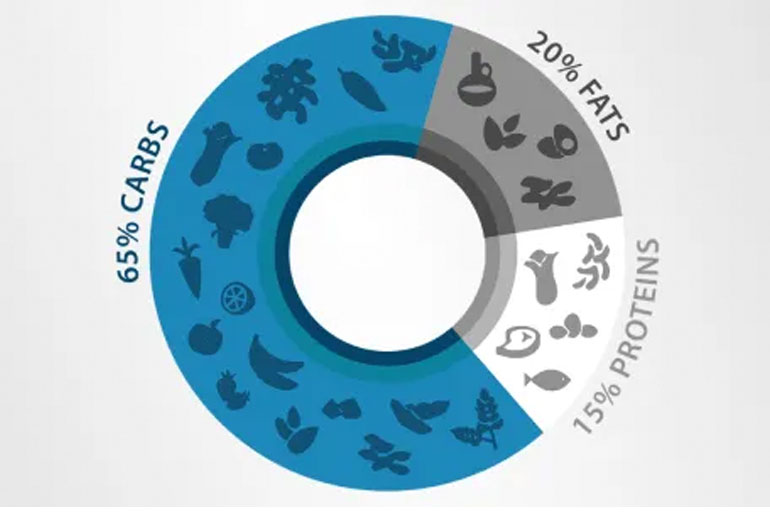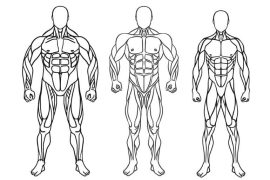The Blue Zone diet promotes a balanced and nutritious approach to weight loss and overall health by focusing on fiber-rich foods, healthy fats, and mindful eating practices. Rather than relying on short-term fad diets, it emphasizes portion control through the practice of eating until 80% full, which helps prevent overeating. This method not only aids in shedding extra pounds but also strengthens gut health and supports a lifestyle geared towards longevity and wellness.
Blue Zone diet
The Blue Zone diet is inspired by the eating habits of people who live in regions known as Blue Zones—areas where individuals tend to live longer, healthier lives. The diet emphasizes plant-based foods including vegetables, fruits, whole grains, legumes, and nuts, while limiting processed foods, added sugars, and red meat. It also includes moderate amounts of fish, dairy products, and healthy fats like olive oil, with a focus on traditional, home-cooked meals. Along with regular exercise and maintaining strong social bonds, this dietary approach contributes to longevity and overall wellness.
Weight Loss Benefits of the Blue Zone Diet
The Blue Zone diet is not just about food choices; it promotes a holistic approach to healthy living, which can lead to effective and sustainable weight loss. Here’s a breakdown of how this diet supports weight management:
1. High in Fibre, Low in Calories: One of the key components of the Blue Zone diet is its focus on high-fibre foods. Foods like vegetables, fruits, legumes, and whole grains are rich in fibre, which has been shown to aid weight loss. Studies have found that fibre consumption helps keep you feeling full longer, reducing hunger and the urge to overeat. Additionally, these fibre-rich foods are typically lower in calories, allowing for a calorie deficit without leaving you feeling hungry.
2. Fewer Processed Foods and Added Sugars: The Blue Zone diet emphasizes whole, unprocessed foods and minimizes the intake of sugary and processed items, which are major contributors to weight gain. Processed foods often contain unhealthy fats, refined carbohydrates, and artificial additives that can lead to excess calorie consumption and poor metabolism. By cutting out these foods, the diet naturally helps reduce calorie intake and improve metabolism, promoting weight loss.
3. Encourages Healthy Gut Bacteria: A plant-based diet that includes fermented foods like miso and yogurt plays a crucial role in fostering a healthy gut microbiome. Beneficial gut bacteria are essential for proper digestion and metabolism. When your gut is in balance, it can help minimize bloating, improve digestion, and optimize fat-burning processes, which ultimately supports weight loss.
4. Promotes Portion Control and Mindful Eating: Mindful eating is another central tenet of the Blue Zone lifestyle. Communities in Blue Zone regions practice eating until they are about 80% full, a concept known as “Hara Hachi Bu.” This approach prevents overeating, allowing people to maintain a healthy weight. By eating slowly and savoring meals, the body can better signal when it’s full, leading to a natural reduction in calorie intake.
5. Encourages an Active Lifestyle Naturally: The Blue Zone way of life also promotes an active lifestyle through everyday activities like walking, gardening, and doing household chores. This constant movement helps burn calories naturally, without the need for intense exercise. Combined with a nutrient-dense diet, this active lifestyle encourages gradual and sustainable weight loss over time.
How to Follow the Blue Zone Diet
Adopting the Blue Zone Diet involves more than just changing what’s on your plate—it’s about embracing a lifestyle rooted in natural, wholesome living. Here’s how you can follow this diet effectively:
1. Focus on Plant-Based, Whole Foods: At the heart of the Blue Zone Diet is the consumption of plant-based, whole foods. Your meals should primarily consist of vegetables, fruits, legumes (such as beans, lentils, and chickpeas), whole grains like brown rice, quinoa, and whole wheat, and a variety of nuts. These nutrient-rich foods are naturally low in unhealthy fats and high in fibre, making them ideal for maintaining a healthy weight and supporting digestion.
2. Choose Healthy Fats and Plant-Based Proteins: Healthy fats should come from natural sources like olive oil, avocados, and nuts. When it comes to protein, the emphasis is on plant-based options. You can supplement your protein intake with small amounts of fish, eggs, and dairy. These animal products are consumed occasionally and in moderation, aligning with the diet’s goal of reducing inflammation and supporting long-term health.
3. Limit Meat and Avoid Processed Foods: Meat is not the focal point in the Blue Zone Diet—it’s used more as a flavoring or side dish rather than the main component of meals. Red meat and excess dairy should be limited, and processed foods, refined sugars, and artificial additives should be avoided altogether. This shift helps reduce intake of harmful fats and additives that can negatively impact metabolism and overall well-being.
4. Practice Mindful Eating: Another key element is mindful eating. Blue Zone communities often follow the “80% rule” (Hara Hachi Bu), which involves eating until you’re about 80% full to prevent overeating. Eating slowly and with intention allows your body to register fullness more accurately, reducing unnecessary calorie consumption and promoting better digestion.
5. Embrace an Active and Purposeful Lifestyle: In addition to dietary changes, the Blue Zone lifestyle encourages natural movement through daily routines—walking, gardening, and performing household chores. Staying active without structured exercise routines contributes to weight management and overall physical and mental wellness.
By incorporating these practices, the Blue Zone Diet becomes more than a nutrition plan—it evolves into a sustainable lifestyle that promotes longevity, supports gut health, reduces inflammation, and enhances quality of life.
Who should not follow
While the Blue Zone diet offers numerous health benefits, it may not be suitable for everyone. Individuals who require higher levels of protein—such as athletes or those needing specific nutritional support—and people with medical conditions like kidney disease or severe food allergies should exercise caution. Additionally, those who have difficulty digesting legumes and other high-fiber foods might find this diet challenging. As always, it is important to consult with a healthcare professional before making significant dietary changes, especially if you have underlying health concerns.
Disclaimer:
The information contained in this article is for educational and informational purposes only and is not intended as a health advice. We would ask you to consult a qualified professional or medical expert to gain additional knowledge before you choose to consume any product or perform any exercise.







